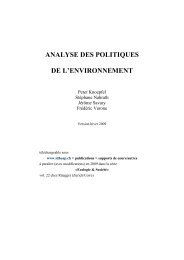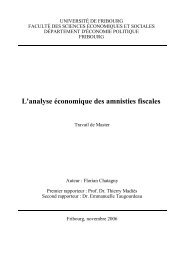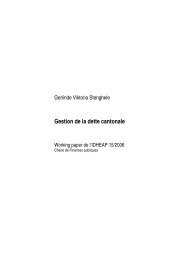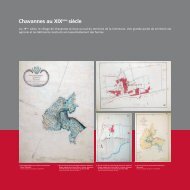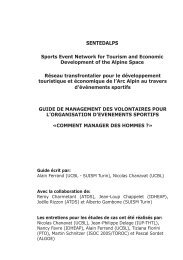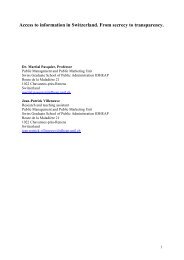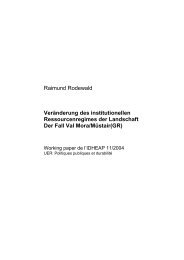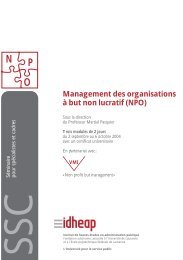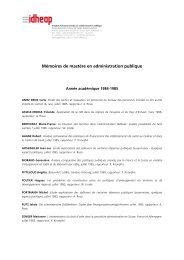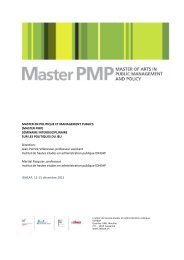Voting advice applications and party choice: evidence from ...
Voting advice applications and party choice: evidence from ...
Voting advice applications and party choice: evidence from ...
Create successful ePaper yourself
Turn your PDF publications into a flip-book with our unique Google optimized e-Paper software.
<strong>Voting</strong> <strong>advice</strong> <strong>applications</strong> <strong>and</strong> <strong>party</strong> <strong>choice</strong> 375<br />
Table 3, most of the voters used the voting recommendations to refine their ballots. Due<br />
to smartvote, they split their votes more often <strong>and</strong> also voted more often for c<strong>and</strong>idates<br />
that they otherwise would have overlooked. These findings are in line with <strong>evidence</strong><br />
<strong>from</strong> another study, which could show that users do not trust smartvote blindly but that<br />
they use it as a starting point for gathering further information about the c<strong>and</strong>idates<br />
ranking highest in their voting recommendations (Fivaz <strong>and</strong> Nadig, 2010). For our later<br />
analysis, it is particularly interesting to see that two-thirds of users indicated that they<br />
voted for parties or c<strong>and</strong>idates that they otherwise would not have voted for. We will<br />
follow up on this tendency when we assess whether those who were influenced by the<br />
tool in their decisions actually changed their vote <strong>choice</strong>s to another <strong>party</strong> – an impact<br />
that would have the strongest consequences for the elections in general.<br />
So far, the survey answers of users show that some smartvote users had been strongly<br />
influenced by the tool in their voting decisions. Even though not all users are affected to<br />
the same degree, the impact on all groups of users is on, an average, several times higher<br />
than that observed in other countries. Whether this is due to country specifics of the<br />
election process, the tool, or simply an artefact of the self-selected sample cannot be<br />
determined at this point. The next section offers a more in-depth analysis of potential<br />
impacts of the tool on voters by focusing on actual changes in the voting behaviour of<br />
users.<br />
5 In-depth analyses: swing voters among smartvote users<br />
As presented in the previous section, a large majority of smartvote users in our sample<br />
stated that the tool affected their vote <strong>choice</strong>s. However, we likewise mentioned that we<br />
do not know whether this influence was actually exercised at the polls. As Walgrave<br />
et al.’s (2008) study on the 2004 Belgian elections suggests, VAAs seem to affect<br />
people’s vote intentions <strong>and</strong>, to a lesser degree, their actual vote <strong>choice</strong>s. According to<br />
the authors, people tend to report that the voting recommendations affected their vote<br />
intention but do not exhibit this change of mind at the polls. Since the chance of overreporting<br />
the effects of the tool is great, we will now use a different indicator to measure<br />
the potential influences of smartvote on people’s voting behaviour. Instead of the direct<br />
question used in the preceding section, we will use swing-voting as an alternative,<br />
indirect impact measurement. As outlined earlier, a majority of users stated that they<br />
ended up voting for someone that they would not have considered before using the tool.<br />
Our question is, therefore, whether we can observe an effective vote change among those<br />
users who reported that the tool influenced their vote <strong>choice</strong>s.<br />
Swing voters are defined as voters who changed their <strong>party</strong> <strong>choice</strong>s in 2007 compared<br />
to their <strong>party</strong> <strong>choice</strong>s in the previous elections. Since the voting recommendations are<br />
based on extensive policy congruence, chances are that these services reveal a matching<br />
outcome that is different <strong>from</strong> what people might have expected. Furthermore, since they<br />
gain additional information, it is likely that this might alter the perception that people<br />
have of parties or c<strong>and</strong>idates. If they then place enough trust in the tool <strong>and</strong> are<br />
convinced by the outcome, they might be inclined to adapt their initial <strong>choice</strong>s<br />
accordingly. At the same time, it is also likely that those who do not have clear-cut<br />
preferences with regard to their <strong>party</strong> <strong>choice</strong>s or are uncertain about which <strong>party</strong> they



